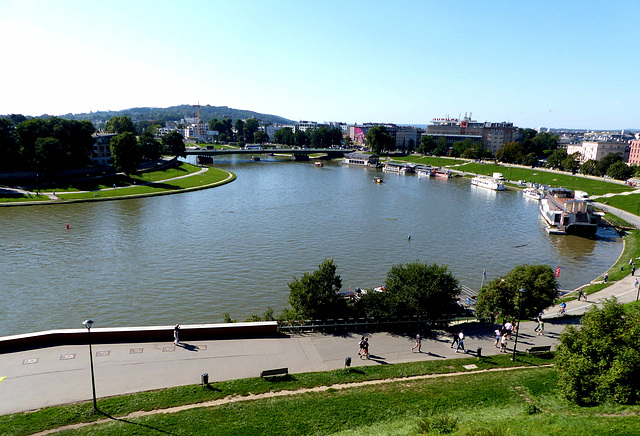Kraków - Sukiennice
Kraków - Elephant
Kraków - Kościół Świętej Trójcy
Kraków - Kościół Świętej Trójcy
Kraków - Kościół Świętej Trójcy
Kraków - Kościół Świętej Trójcy
Kraków - Kościół św. Andrzeja
Kraków - Kościół św. Andrzeja
Kraków - Kościół św. Andrzeja
Kraków - Kościół ŚŚ Piotra i Pawła
Kraków - Kościół ŚŚ Piotra i Pawła
Kraków - Kościół ŚŚ Piotra i Pawła
Kraków - Kościół ŚŚ Piotra i Pawła
Kraków - Poczta Główna
Kraków - Kościół św. Andrzeja
Kraków - Kościół św. Andrzeja
Kraków - Plac Bohaterow Getta
Kraków - Vistula
Kraków - Wawel
Kraków - Katedra Wawelska
Kraków - Katedra Wawelska
Kraków - Katedra Wawelska
Kraków - Katedra Wawelska
Kraków - Bazylika Mariacka
Kraków - Bazylika Mariacka
Kraków - Bazylika Mariacka
Kraków - Bazylika Mariacka
Kraków - Bazylika Mariacka
Kraków - Bazylika Mariacka
Kraków - Bazylika Mariacka
Kraków - Bazylika Mariacka
Kraków - Bazylika Mariacka
Kraków - Bazylika Mariacka
Kraków - Sukiennice
Kraków - Sukiennice
Kraków - Sukiennice
Kraków - Bazylika Mariacka
Kaunas - Mtevani
Vilnius - Būsi Trečias
Riga - Ikos Olivia Restaurant
Rapla - Marju Kohvik
Alūksne - Pajumte
Alūksne - Pajumte
Tallinn - MySushi
Kościelec - Kościół pw. św. Wojciecha
Location
Lat, Lng:
You can copy the above to your favourite mapping app.
Address: unknown
You can copy the above to your favourite mapping app.
Address: unknown
See also...
Keywords
Authorizations, license
-
Visible by: Everyone -
All rights reserved
-
95 visits
Kraków - Vistula


A legend attributes Kraków's founding to the mythical ruler Krakus, who built it above a cave occupied by a dragon, Smok Wawelski. The first written record dates to 965, when Kraków was described as a notable commercial center captured by a Bohemian duke Boleslaus I in 955. The first ruler of Poland, Mieszko I, took Kraków from the Bohemians.
In 1038, Kraków became the seat of the Polish government. By the end of the 10th century, the city was a center of trade. Brick buildings were constructed, including the Royal Wawel Castle. The city was sacked and burned during the Mongol invasion of 1241. It was rebuilt and incorporated in 1257 by Bolesław V the Chaste who introduced city rights. In 1259, the city was again ravaged by the Mongols. The third attack in 1287 was repelled thanks in part to the newly built fortifications.
The city rose to prominence in 1364, when Casimir III founded the University of Kraków, the second oldest university in central Europe. But after Casimir´s death in 1370 the campus did not get completed.
As the capital of the Kingdom of Poland and a member of the Hanseatic League, the city attracted craftsmen from abroad, guilds as science and the arts began to flourish. The 15th and 16th centuries are known as Poland's "Złoty Wiek" (Golden Age).
After childless King Sigismund II had died in 1572, the Polish throne passed to Henry III of France and then to other foreign-based rulers in rapid succession, causing a decline in the city's importance that was worsened by pillaging during the Swedish invasion and by an outbreak of bubonic plague that left 20,000 of the city's residents dead. In 1596, Sigismund III of the House of Vasa moved the capital of the Polish–Lithuanian Commonwealth from Kraków to Warsaw.
-
The Vistula, seen from the Wawel.
Translate into English
In 1038, Kraków became the seat of the Polish government. By the end of the 10th century, the city was a center of trade. Brick buildings were constructed, including the Royal Wawel Castle. The city was sacked and burned during the Mongol invasion of 1241. It was rebuilt and incorporated in 1257 by Bolesław V the Chaste who introduced city rights. In 1259, the city was again ravaged by the Mongols. The third attack in 1287 was repelled thanks in part to the newly built fortifications.
The city rose to prominence in 1364, when Casimir III founded the University of Kraków, the second oldest university in central Europe. But after Casimir´s death in 1370 the campus did not get completed.
As the capital of the Kingdom of Poland and a member of the Hanseatic League, the city attracted craftsmen from abroad, guilds as science and the arts began to flourish. The 15th and 16th centuries are known as Poland's "Złoty Wiek" (Golden Age).
After childless King Sigismund II had died in 1572, the Polish throne passed to Henry III of France and then to other foreign-based rulers in rapid succession, causing a decline in the city's importance that was worsened by pillaging during the Swedish invasion and by an outbreak of bubonic plague that left 20,000 of the city's residents dead. In 1596, Sigismund III of the House of Vasa moved the capital of the Polish–Lithuanian Commonwealth from Kraków to Warsaw.
-
The Vistula, seen from the Wawel.
- Keyboard shortcuts:
Jump to top
RSS feed- Latest comments - Subscribe to the comment feeds of this photo
- ipernity © 2007-2025
- Help & Contact
|
Club news
|
About ipernity
|
History |
ipernity Club & Prices |
Guide of good conduct
Donate | Group guidelines | Privacy policy | Terms of use | Statutes | In memoria -
Facebook
X

Sign-in to write a comment.